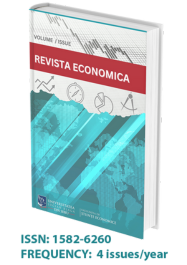
ECONOMIC CONSEQUENCES OF THE USE OF A TRADE MARK BY A NON-PROPRIETOR, BUT WITH THE TACIT CONSENT OF THE PROPRIETOR. CASE STUDIES
FANTANA Raul Sorin, Emanuel University Oradea, Romania
Abstract:
The increased complexity of the economic system through the emergence of new economic situations and instruments, the consequences on the property right over assets in general - and especially on intellectual property assets - in the insolvency procedure, the precarious knowledge of special laws and the risks of their misapplication in the field of intellectual property, have led to the occurrence of complex situations in commercial relationships or in the valuation of assets, or, more seriously, in the occurrence of ethical deeds with the aim of obtaining an unfair profit. The trademark is the intellectual property asset that accumulates the most peculiar situations of unfair competition, counterfeiting, mismanagement. The lack of a legal transfer of rights (assignment, license) between the trademark owner and its user invariably leads to situations where at least one of the parties is economically disadvantaged. Effective use of Group 20 accounts ”Intangible assets” would avoid the unpleasant situations outlined above. The paper presents several cases taken from the case files in which it was necessary to carry out specialized expert reports, as well as some special evaluations of the market value of some trademarks in which the author was directly involved.
Keywords: intangible assets, trademark, transfer of rights, asset evaluation, expert report
JEL Classification: A12, D23, D45, M21, O34
Volume: 69, Issue: 4
Pages: 110 - 117
Publication date: November, 2017
Download the article: http://economice.ulbsibiu.ro/revista.economica/archive/69410fantana.pdf
FANTANA Raul Sorin, 2017, ECONOMIC CONSEQUENCES OF THE USE OF A TRADE MARK BY A NON-PROPRIETOR, BUT WITH THE TACIT CONSENT OF THE PROPRIETOR. CASE STUDIES, Revista Economică, Lucian Blaga University of Sibiu, Faculty of Economic Sciences, vol.69(4), pages 110-117, November

All content is licensed under the
Creative Commons Attribution 4.0 International License (CC BY 4.0)
.








